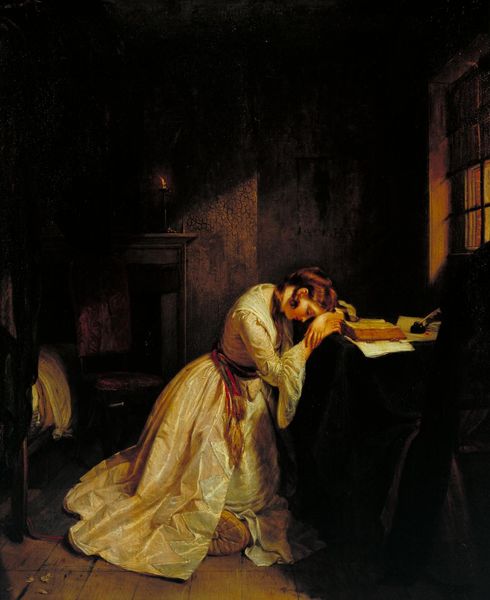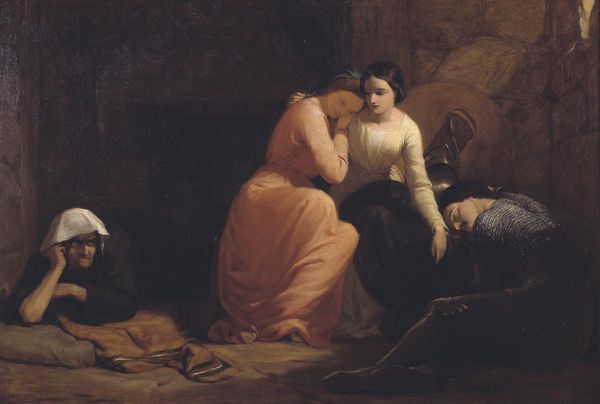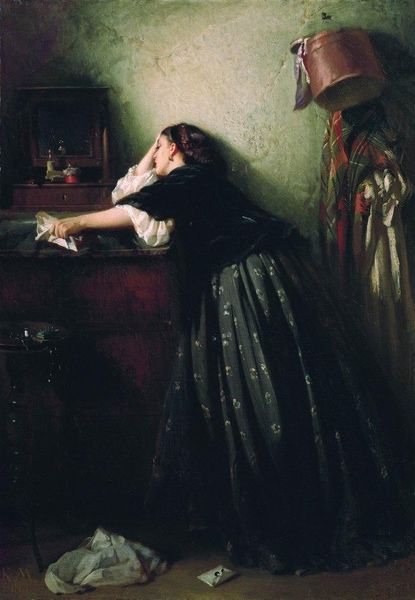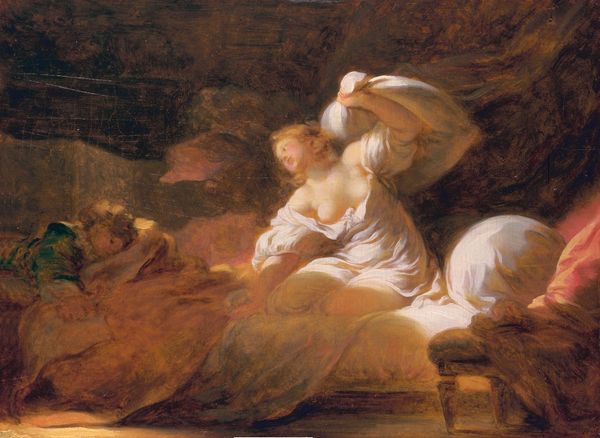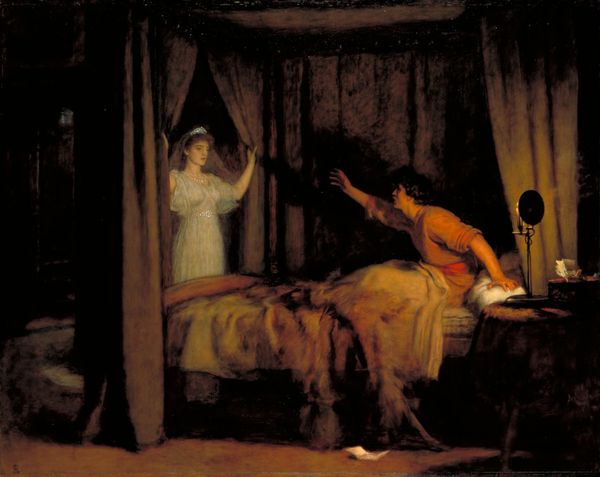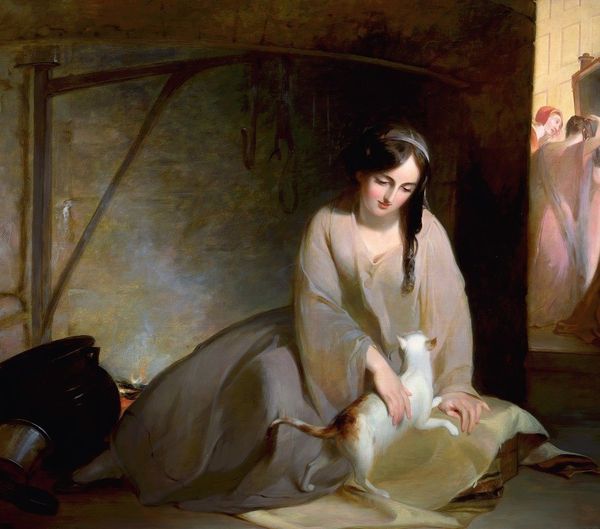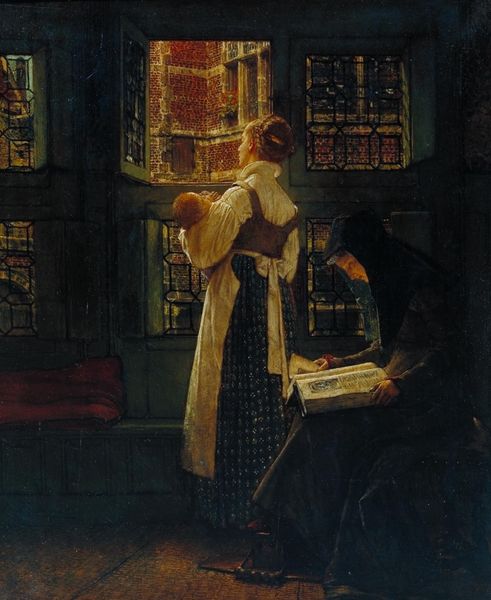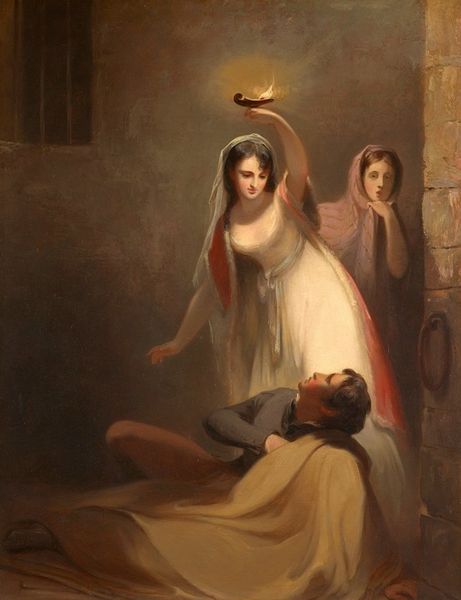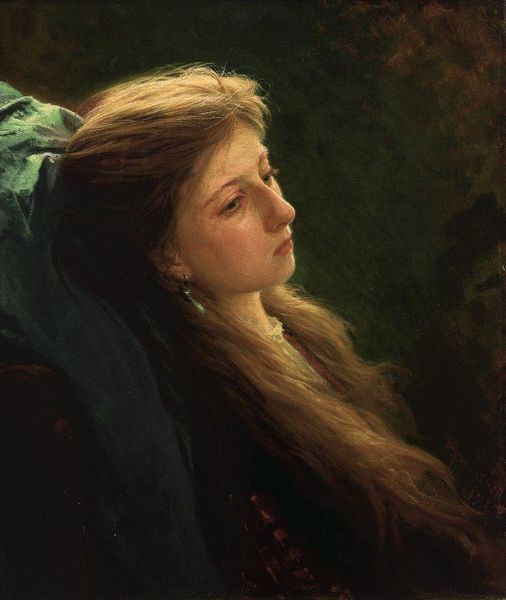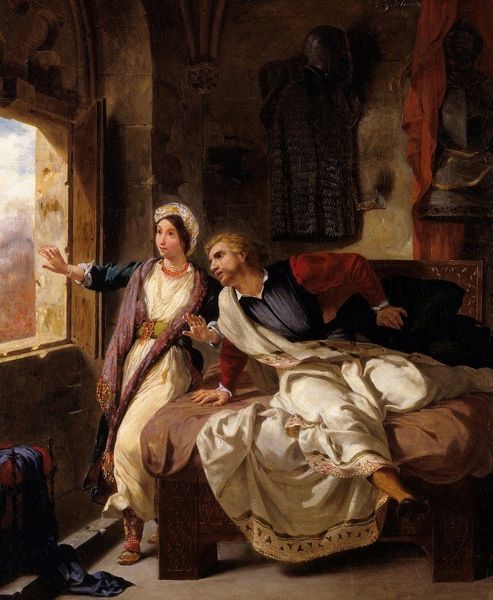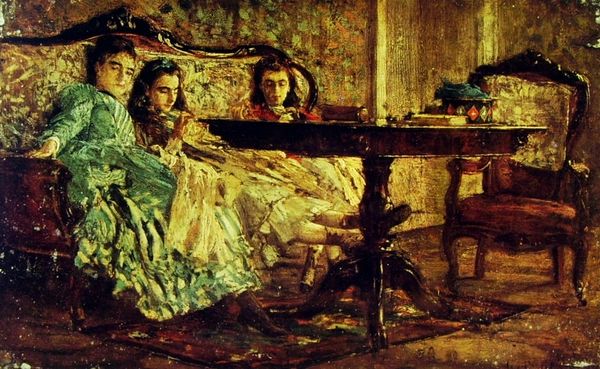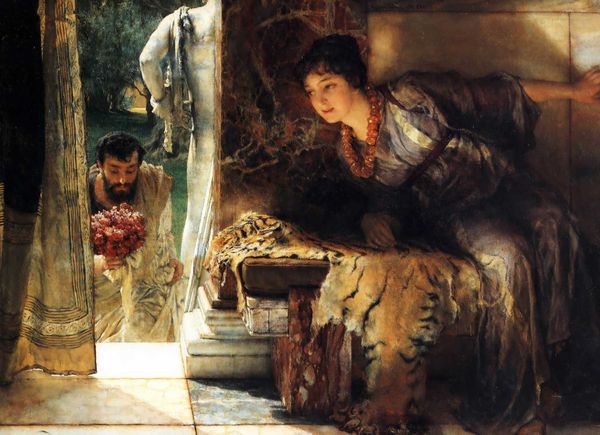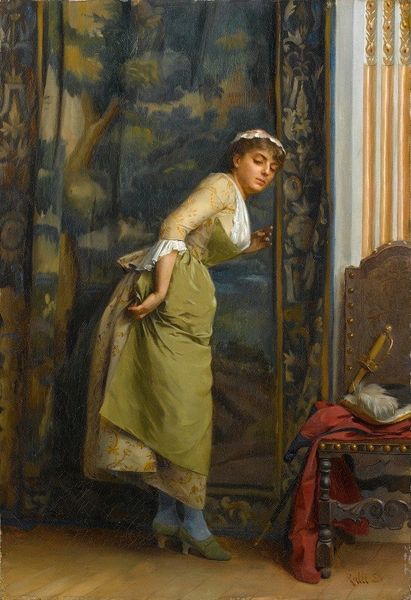
Princess Tarakanova, in the Peter and Paul Fortress at the Time of the Flood 1864
0:00
0:00
Copyright: Public domain
Editor: We're looking at Konstantin Flavitsky's "Princess Tarakanova, in the Peter and Paul Fortress at the Time of the Flood," painted in 1864 using oil paints. The scene is instantly heavy, filled with dread. What structural components contribute to this feeling? Curator: The painting’s composition emphasizes verticality: the princess, the bars of the window. This is immediately contrasted with the rising horizontal of the flood waters, visually trapping the figure. How do these vertical and horizontal elements interact? Editor: I see... The verticals almost represent her struggle, her upright posture against the wall, while the horizontal water is an inescapable force, and visually grounding the scene into an obvious problem with no solution in sight. How do the colors support this visual structure? Curator: The palette consists of contrasting light and dark. Notice how the light source illuminates the princess, drawing our eye to her despair, but also how that light is sharply cut off by the darkness enveloping the upper portion of the room and corners? This contrast intensifies the mood of the painting. And what does the textural variation, the smooth skin against the rough stone of the wall, communicate? Editor: The smooth against rough creates tension… as if she doesn't belong in this cold environment. This has been incredibly helpful in understanding how Flavitsky uses basic pictorial tools. Curator: Precisely. By examining the composition and play of light and texture, we've unlocked another level of understanding this artwork. Editor: Absolutely, I never considered that these core principles create so much more in visual experience!
Comments
No comments
Be the first to comment and join the conversation on the ultimate creative platform.
